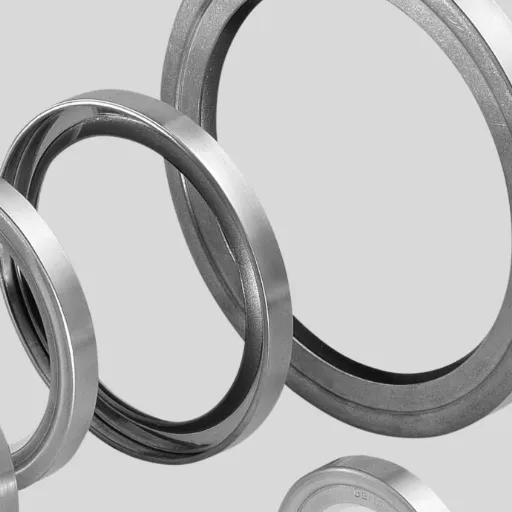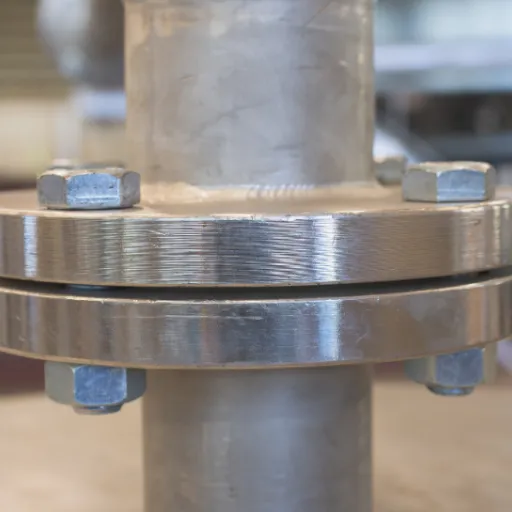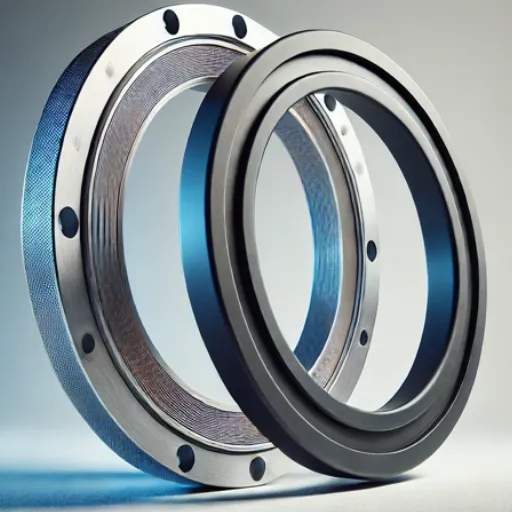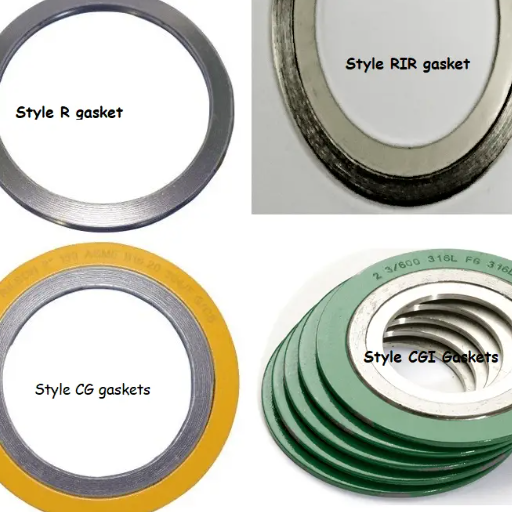Weld Neck Flanges are defined by a strong build that gives them durability in hostile environments, making them imperative components in several industries. This work primarily acts as an in-depth guide for understanding weld-neck flanges, their key types, major uses, and how crucial wall thickness is to their application. If you are into sectors like oil and gas, chemical processing, or virtually any industry that requires sturdy piping systems, then a clear understanding of weld neck flanges is essential. By going through these aspects, you can recognize the importance of these flange types, helping you figure out which flange can work for your specific purpose.
Understanding Flanges

Flanges are important components used for joining pipes, valves, pumps, and so on, thus being a part of the piping system. They ensure a secure seal for the safe transport of liquids, gases, or other materials. Usually, flanges are bolted together and often installed with a gasket for a tight seal. They have a wide array of uses in industries such as oil and gas, chemical processing, and water treatment. There are different types of flanges, such as weld neck, slip-on, and blind flanges, each having design considerations to meet the requirements and the field of application.
What is a Flange?
A flange is a structural component that acts as a mover, transferring forces from one pipe, valve, pump or any other equipment inside the piping system. Acting as a junction point, flanges ensure secure connectivity while allowing for easy assembly and disassembly during inspections, maintenance, or repairs. They are generally constructed with bolt holes so they can be fastened together, and a gasket is often inserted between the surfaces to create an airtight or watertight seal. Flanges exist in many materials such as stainless steel, carbon steel, and various alloys to suit the environmental conditions and pressure requirements. Commonly used in oil and gas, water treatment, petrochemical, and power generation industries, modern flanges are manufactured to meet international standards, such as ASME, ANSI, or ISO for quality and compatibility under strict conditions. With technological advancement and new materials, flanges are more accident and weather-proof, thus gaining crucial significance on any industrial application.
Flange Types Overview
Flanges are classified into many different types according to their shape, purpose, and manner of joining to another component. The following is a comprehensive description of the common types of flanges, along with their particular features:
1. Weld Neck Flange
The weld neck flange enjoys worldwide popularity for its strength and for working in medium-to-high pressure. It has a long tapering hub which gives it extra strength and helps avoid concentration of stresses. The weld neck flange would be used in pipelines carrying hazardous or very high-pressure fluids. Because of the smooth transition between the flange and pipe, maximum integrity is assured especially at extreme temperature and pressure conditions.
2. Slip-on Flange
Slip-on flanges are easy to install by welding or bolting them to the pipe and are cheap; thus, they are very popular in low-pressure applications. These flanges are slipped over the pipe and welded both inside and outside for better strength and leak resistance. These flanges are used in systems where frequent dismantling is needed for maintenance or inspection purposes.
3. Blind Flange
Blind flanges are, of course, used to seal the ends of pipes, valves, or pressure vessel openings. Being blind means the flange does not have a bore and is therefore able to completely block off the flow idly. They are extremely useful in applications requiring frequent testing or requiring strong pressure resistance, providing superior isolation and durability.
4. Socket Weld Flange
Socket weld flanges are applied for small diameter high-pressure pipes. The pipe is inserted into the socket of the flange and then welded around the outside of the hub, creating a strong weld. This design eliminates leaks due to internal pressure and is preferred in chemical processing or high-pressure steam lines.
5. Threaded Flange
Threaded flanges are designed to have internal threads to allow them to be screwed onto pipes that have matching male threads. Welding is not involved in the installation process, thus making them suitable in systems involving low pressure and non-critical environments. Threaded flanges are ill-advised for use in high-pressure, high-temperature applications.
6. Lap Joint Flange
Lap joint flanges are used in conjunction with a stub end, providing the flexibility necessary for alignment and easy dismantling. They are most suitable in applications where piping network assemblies and disassemblies are frequent. These flanges would work best for low-pressure scenarios and prove economical on systems where the materials are non-corrosive.
Data and Trends
Globally, industrial use requires over 55% weld neck and slip-on flanges being the most demanded types of flanges. New materials like alloy steels, stainless steels, and exotic alloys have evolved to improve the flange durability and performance, making them suitable for harsher environments. Corrosion-resistant and green flanges are projected to see an approximate 4.7% CAGR from 2023 to 2030 into the market.
The ability of flange designs to cater to varying industrial requirements continues to grow, with safety and efficiency being given a priority in all sectors.
Importance of Flange Specifications
The flange specifications have an important role in ensuring the safety, efficiency, and longevity of industrial systems. Correctly specified flanges are designed according to pressure or temperatures during operations or environmental conditions and thereby serve as a few of the key components in pipeline construction, power plants, and manufacturing plants. The industry has said that about 40% of pipeline failures occur because of an improper flange selection or installation, thus emphasizing the importance of correct specifications.
Modern designs of flanges comply with international standards such as ASME, DIN, and ISO to promote global compatibility and reliability. Material selection, pressure ratings, and face types are all factors that ensure industry-specific requirements are satisfied. Stainless steel flanges with a high degree of corrosion resistance are generally used offshore and in marine environments, whereas carbon steel flanges are generally used in high-pressure applications such as oil and gas.
With the advent of new technologies, bespoke gasket and flange solutions have become available so that industries can optimize performance for unusual conditions. Digital tools such as CAD software enable engineers to design flanges precisely adapted to their operational requirements. Making good use of such innovations, industries find their performance greatly enhanced, as well as a great decrease in downtime and maintenance expense.
In recent years, the emphasis on sustainability has led to the inclusion of recyclable materials and energy-efficient processes in flange manufacture. Globally, the campaign for minimizing carbon footprints is another impetus supporting green flanges, which are driving innovation and shifting industry standards.
Weld Neck Flanges Explained

Weld neck flanges are flanges made for applications requiring pressure and temperature higher than those normal. Such flanges have a long tapered hub, which treats the connected pipe as a continuous entity, imposing maximum structural integrity upon it and avoiding stress concentration. The weld neck flange is welded to the pipe with the weld creating an extremely strong and durable connection. Weld neck flanges find applications especially in industries like oil and gas, petrochemical, and power generation because of their credibility with handling such conditions.
Definition of Weld Neck Flange
The weld neck flange is a type of flange with a long tapered hub to provide reinforcement and aid in an even distribution of stress over the connected pipe. It, however, is quite useful in high-pressure and high-temperature applications since it enhances structural integrity and lessens the chance of failure. According to present-day standards and practices, weld neck flanges are from materials such as stainless steel, carbon steel, and alloy steel according to the requirements of oil and gas, chemical processing, and power generation industries.
Recent developments have seen an increasing uptake of weld neck flanges, primarily due to their outstanding performance in harsh environments. They are especially suitable for pipelines or systems working through variable temperature or pressure where preventing leaks is paramount. Furthermore, capacity building in materials engineering and machining techniques has enabled the production of weld neck flanges, which are more accurately finished to ensure tighter seals and longer service life, making them the first choice for industrial and commercial piping systems.
Characteristics of Weld Neck Flanges
When looking at the features of weld neck flanges, it is the benefits I focus on. They have been given the attribute of having a long tapered hub for excellent reinforcement, which makes them a fine choice for high-pressure applications. Slightly, these flanges facilitate smooth flow of fluids, minimizing turbulence and erosion. Weld neck flanges are also characterized by durability, precise alignment, and resistance to conditions, thus being most trusted in systems where tough conditions require.
Wall Thickness Considerations
While selecting a suitable wall thickness for piping and flanges, operation and environmental factors are of paramount importance in maintaining system integrity and safety. The thickness of the wall should be adequate to resist the internal pressures and temperatures of the media it carries apart from external forces or environmental conditions. A reference to standards such as ASME B31.3 or ASME B16.34 would be critical since these provide accepted guidelines in the calculation of minimum thickness as a function of pressure, diameter, and material.
With present advancements in materials science and manufacturing processes, it is possible to weigh the thicknesses of flanges and pipes against their performance and stretch that to cost savings. Finite Element Analysis (FEA) has come in very handy to simulate the distribution of stress, giving engineers an idea of how flanges behave in different scenarios. By combining conventional engineering approaches and modern-day computational data, the process of choosing the correct wall thickness ensures reliability for a long time and reduces possible risk.
Types of Weld Neck Flanges
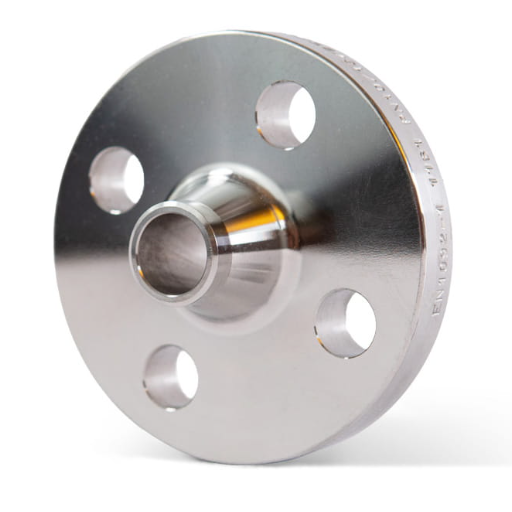
| Key Point | Details |
|---|---|
| Types | Standard, Long, Reducing |
| Material | Carbon, Stainless, Alloy |
| Face Types | RF, RTJ |
| Standards | ASME B16.5, B16.47 |
| Applications | High-pressure, High-temp |
| Advantages | Stress reduction, Durability |
| Sizes | 1/2″ to 24″ |
| Pressure | Class 150 to 2500 |
Standard Weld Neck Flanges
The standard weld neck flange is one of the most used flanges across industries such as oil and gas, chemical, and power generation. It has a long tapered neck that can be welded to a pipe so that there remains a smooth transition between flange and pipe. Stress is evenly distributed over the weld zone; as a result, they fit high-pressure and high-temperature operations.
Modifying latest technical specifications, materials for standard weld neck flange include carbon steel, stainless steel, or alloy steel to meet different service requirements. The usual pressure class of these flanges ranges from 150 to 2500 lbs to ensure that they meet the specifications of piping systems with different requirements.
Dimensional standards are laid down with regard to flange thickness, welding neck dimensions, and bolt hole distances in terms of ASME B16.5 or ASME B16.47. For example, a Class 300 stainless steel weld neck flange may be 1.61 inches thick (8-inch flange) with 12 bolt holes, each having a diameter of 0.88 inches.
Modern technology has taken over manufacturing so as to achieve very precise machining of weld neck flanges, which very often now must undergo stringent inspection using ultrasonic, radiographic, and hydrostatic testing methods. Such quality assurance procedures ensure that the flanges developed can bear test severe environmental conditions, thus reducing the possibility of leaks or failures.
In term of construction, well-engineered, the standard weld neck flange resists any compromise on durability and reliability. Its applicability in diverse materials and applications keeps it at the forefront of pipeline components for industrial applications today.
Long Weld Neck Flanges
Long weld neck flange is a special type of flange tailor-made for either high-pressure or high-temperature applications. Unlike the weld neck flange, the long weld neck flange has a slender and extended neck useful whenever the piping system requires support or reinforcement. Hence, such a configuration can be greatly beneficial to the oil and gas industry, where stress distribution and structural and mechanical integrity are critical.
Checking recent trending topics shows that users ask frequently about how long weld neck flanges are advantageous over others. Principally, their ability to smooth out the concentration of stresses on pipe connections improves reliability and life of the system. Also, the long neck is better suited to insulated pipes or expansion joints, as it can be easily integrated without damaging the performance. These flanges are manufactured from superb materials resisting corrosion, assuring durability, and complying with industry standards set forth in ASME or API specifications.
Long-weld-neck flanges, because of their intricate design and abilities, are the very core of safety and efficiency in demanding industrial systems.
Specialty Weld Neck Flanges
Specialty weld neck flanges are meant to satisfy particular demands in critical industrial applications. These flanges are intended for systems requiring precision, high performance, and reliability under extreme conditions of high pressure, temperature, or corrosion. As per common specifications of ASME and API, they get used in the oil and gas industry, chemical processing, and power generation. The rugged construction ensures a secure and tight connection, rendering these flanges a prime choice wherever enhanced strength and durability are warranted. Specialty weld neck flanges can be manufactured with materials or dimensions matching proprietary requirements and demands.
Uses of Weld Neck Flanges

Weld neck flanges are mainly used for pipe connections in high-pressure and high-temperature applications. With a tapered hub, stress concentration is minimized, and pressure is equally distributed, so it is used for very critical applications in oil and gas, chemical processing, and power generation industries. The weld neck type of flange is well suited in applications where there are repeated thermal cycles or heavy mechanical stresses because they ensure that the connections remain intact for a reasonable period of time.
Applications in Piping Systems
Due to their durability, weld neck flanges are used even in many piping systems, including some that have high-pressure conditions. For example, these flanges are used in oil refineries, natural gas processing plants, and chemical processing industries, where pipeline integrity is of utmost importance. Uses of these flanges are reportedly increasing for offshore drilling and power generation where insulation is very high, and mechanical loads are quite heavy and unpredictable in nature. As well, weld neck flanges provide essential sealing operations in applications that require frequent inspection or maintenance because their ability to minimize leakages is enhanced. These flanges continue to be installed by industry professionals to improve safety and operational efficiency.
Benefits in High-Pressure Environments
Weld neck flanges fit particularly well with high pressure because their manufacturing stands firmly on stress, and their capacity to bear stress is top-notch. Recently reported data indicated a gradual increase in reliance on these flanges by industries handling chemicals under extreme pressure, such as chemical processing plants and oil refineries. The tapered design of the hub allows stress to be shared over the flange and pipe connection evenly, therefore lessening cases of joint failure-a major concern in high-stakes operations. More so, by eliminating turbulence and erosion of wear and tear inside the system as a result of seamless welds, they tend to prolong the lifetime of such systems. Owing to the need for safety and efficiency, weld neck flanges are preferred as a solution for industries that handle volatile or pressurized substances. The reliability translates into minimal downtime and excellent performance even under the harshest operational conditions.
Industry-Specific Uses
With their rugged and efficient design, they are the go-to for weld neck flanges in several industries. They are invaluable in the oil and gas industry for pipelines carrying substances under a high degree of pressure and ensuring that their integrity is preserved in extremes of operating conditions. They find relevance in the chemical industry, too, being highly resistant to corrosion and handled with aggressive fluids while processing in plants. Power-generating systems, such as steam lines or turbines, require weld-neck flanges that can hold up at very high temperatures and stresses. They are also required in industries such as shipbuilding and aerospace, where exactness and sturdiness are needed to negotiate complex mechanical systems. The trend has been reflected, even recently, in the growing interest for enhanced materials for weld neck flanges, such as stainless steels with improved corrosion resistance, to guarantee their suitability for changing industrial needs.
Reference Sources
- Academia.edu: Flange Types – This document provides an overview of different flange types, including weld neck flanges, and their applications.
- CiteSeerX: Failure Analysis of High-Pressure Butt-Weld Flanges – A detailed analysis of weld neck flanges in high-pressure applications.
- Yale University Facilities Design Standards: Piping Hydronic, Steam Condensate, and Welding Requirements – This document includes specifications for welding neck flanges in industrial piping systems.
- Top Weld Neck Flanges Suppliers in China
Frequently Asked Questions (FAQs)
How to identify the types of weld neck flanges?
To identify the types of weld neck flanges, first, observe the design which features a long tapered hub that provides a smooth transition from flange thickness to pipe. This design is crucial for ensuring a reliable connection between two pipes. Additionally, you should check the flange bore, which refers to the inside diameter of the flange. Depending on the application, different flange types may have varying pressure ratings, so consult specifications related to the diameter of the pipe being used. Understanding whether the flange is a stainless steel welding neck flange or a carbon steel version can also help in identifying the type.
What are the uses of weld neck flanges in piping systems?
Weld neck flanges are widely used in piping systems due to their ability to withstand high pressures. They are typically employed in applications where a strong, leak-proof connection is essential, such as in oil and gas pipelines, chemical processing, and power generation. The design of the welding neck allows for a full penetration weld, which is favored for its strength and durability. Additionally, these flanges can accommodate various pipe sizes, making them versatile for different piping configurations. Their raised face also aids in creating a better seal between two pipes, further enhancing their utility in critical applications.
What is the significance of the flange thickness in weld neck flanges?
The flange thickness in weld neck flanges is significant as it directly influences the strength and pressure rating of the connection. A thicker flange can better withstand higher pressures, making it suitable for demanding applications. When selecting a flange, it is essential to match the thickness with the pipe wall thickness and the expected pressure in the system. Additionally, the thickness and internal diameter must be compatible to ensure a proper fit and seal. Ensuring the flange thickness meets the requirements also helps prevent failures in high-stress environments, thereby enhancing safety and reliability.
How to choose the right welding neck flange for your application?
Choosing the right welding neck flange involves considering several factors, including the pipe size, material, and application requirements. You should first determine the nominal size of the pipe or fitting to ensure compatibility. Next, assess the pressure of the flange required for your specific application, as different materials like stainless steel or carbon steel have different pressure ratings. Additionally, consider whether you will use an automated welding machine or a manual welding process, as this may affect the choice of flange. Finally, always check for certifications and compliance with industry standards to ensure safety and performance.

